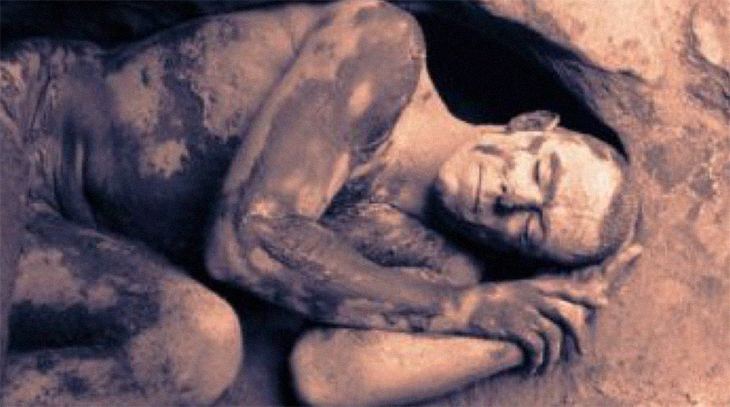
In a recent study, a team of scientists have attempted to answer a rather intriguing question about whether humans or their ancestors ever hibernated.
Although the study authors shared that it was hard to make a conclusive case out of evidence from thousands of years ago, what the researchers did was put together observations from fossil records, which made them firmly believe that humans used to hibernate in their own way all those years ago.
The results of the study were shown through human form evidence of bone structure and growth over the years. The scientists used this information to figure out what people were doing and eating during the different seasonal cycles.
Humans, who are scientifically called Homo sapiens, actually evolved around 300,000 years ago. It was in this research where Greek and Spanish paleoanthropologists studied the fossil evidence that was dated around 500,000 years ago , which means the remains belonged to an extinct humanlike ancestor.
According to the researchers of the paper, “[W]e examined the hominin skeletal collection from Sima de los Huesos, Cave Mayor, Atapuerca, Spain, for evidence of hyperparathyroidism after a thorough review of the literature.”
The caves of Atapuerca are considered some of the most significant archaeological sites because this is where scientists found over 1,600 human fossils. More importantly, these fossils were considered to be from an extremely ‘key period in the evolutionary timeline of Homo Sapiens,’ and have become incredibly important for this particular study’s scope of research.
With caves being a natural shelter, the researchers studied them as an example of early type settlements where humans managed to develop technologies such as agriculture, which then allowed them to “put down roots.”
The study authors believed that in this particular case, these so-called “roots” included them remaining inside the cave a lot of the time, more so during the long and difficult cold winter months.
Evidence in present day also tells us what we need to understand about hibernating animals. We know that they have to tread a very thin line when it comes to preparation and subsistence, making sure that they build enough fat to store while activating biological triggers that allow the body to lower its body temperature and its metabolism. A huge difference in today’s world is that modern humans have technology that allows them to stave off nutritional diseases. Meanwhile, our prehistoric ancestors had nothing of the sort.
It was in these technological deficiencies that left a physical mark o the human skeleton, and this is where the researchers managed to find their clues. The following is just a portion of the list of particular health conditions that they had:
“We found trabecular tunneling and osteitis fibrosa, subperiosteal resorption, ‘rotten fence post’ signs, brown tumours, subperiosteal new bone, chondrocalcinosis, rachitic osteoplaques and empty gaps between them, craniotabes, and beading of ribs mostly in the adolescent population of these hominins. [T]hese extinct hominins suffered annually from renal rickets, secondary hyperparathyroidism, and renal osteodystrophy associated with Chronic Kidney Disease – Mineral and Bone Disorder (CKD-MBD). We suggest these diseases were caused by poorly tolerated hibernation in dark cavernous hibernacula.”
Researchers found a number of examples of weakening or destruction of the skeleton, which they understood precisely because of their knowledge of particular signs caused by certain diseases. Also, due to the periodic nature – which happened annually yet not consistently – they also believed that they could figure out what these ‘seasonal damages to a survival tradeoff made by our ancestors.’
In order to survive, they chose to spend the most difficult part of the year inside their rather safe caves, sleeping. But in order to do that, they had to sacrifice any true nutrition and their vitamin D supply from the sun by staying indoors.
So what did all of this mean? While the human metabolism is considered peculiar and fascinating all on its own, it’s also a key into understanding the so-called bigger picture of how mammals and later on, humanoid mammals, eventually evolved. To be able to hibernate, it requires a major step that’s beyond what any modern man can do, to be able to store up enough fat and other nutrients in order to safely expel them throughout the winter season to survive.
In the end, being able to understand which species was actually able to do this feat also aids archaeologists in understanding why exactly it was Homo sapiens that managed to survive and be the ones that are still on the planet.
What are your thoughts? Please comment below and share this news!
True Activist / Report a typo


